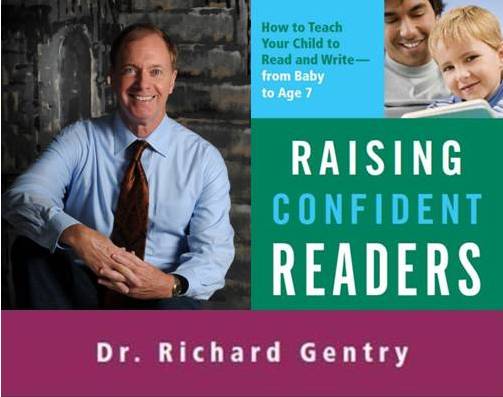Pages
▼
Thursday, April 1, 2010
Beginnings of a Confident Blog
CONFIDENT READERS are not born, but they can be made—naturally, lovingly, and joyfully—by a child’s first reading teacher: you. (Taken from J. Richard Gentry, Ph.D., Raising Confident Readers p.1) Come blog about beginning literacy with me!
Another blog? Just what the world needs, you say. But this blog, Raising Confident Readers, will serve a valuable purpose for parents, teachers, primary caregivers, and others interested in early childhood literacy—it will answer your questions about how to teach beginning reading and writing.
Over the next several months, and beyond we will discuss a wide range of topics. Most of our discussions will have a direct bearing on what you can do to help your child learn to read and write—birth to age 7 and beyond— and keep them on track for achieving success with literacy. Simple, common sense ideas will be put forward as well as more complex solutions involving collaboration between parents, teachers, and the school district.
Statements will be made, questions will be asked, and answers will be provided. So many teachers and parents with whom I come in contact, whether in my travels across the country or via phone, email, Twitter or FaceBook, are seeking help with their children and students. School districts are at a loss trying to decide what methodology is best for creating data driven progress monitoring systems and best-practice instruction. How best do we track each beginning reader, writer, and speller’s progress along a continuous literacy path? Parents are concerned that their child will not be properly prepared for kindergarten. How can the parent and preschool teacher take advantage of the critical period of brain development from birth to age four? Teachers see students who are well behind grade level and need guidance in determining where each child is in development and how to move him or her forward. Schools need assistance in choosing the right literacy programs, but beyond identifying the five critical areas of reading instruction—phonemic awareness, phonics, vocabulary, fluency, and comprehension—do decision makers in your district really understand how each of these components works in tandem on a natural developmental continuum for each child?
I look forward to having a discussion with you and sharing some of the insights and solutions I have gathered in my nearly 40 years of being a professional educator. Please send me your questions, share your experiences, and tell me the concerns you have about raising the confident readers in your life.
The road to Confident Readers starts here. Let's travel it together!
Our first feature, coming soon, will answer this question:
“Do all children learn to read the same way?”
You may be surprised at the answer!

No comments:
Post a Comment